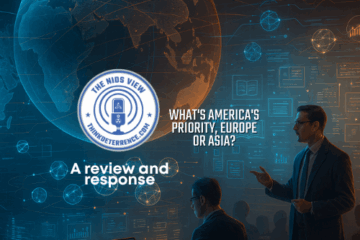When the Ukraine war broke out, India implemented a series of policy measures that took the West by surprise. In the United Nations General Assembly, it refused to condemn the Russian invasion and, instead, along with 34 other nations, chose to abstain from the vote. That meant that 4.4 billion people, a majority of the world’s population, refused to condemn the Russians.
Despite pressure from the Biden administration, the Indian government stuck to its position and, instead, bought Russian oil at discount prices only to refine it and sell it to Europe. The Indians also continued to buy arms from Russia and have sought to rebuild the defense arsenal and civilian scientific sector with Russian technology. Why have the Indians stuck to the Russians despite a warming relationship with the United States? What are the implications of India’s continued relationship with Russia?
The Military Linkage
First and foremost, India sees Russia as the source of weaponry, military technology, and the provider of systems that the West is unwilling to sell. Thus, the Indians leased nuclear submarines from the Russians which proved invaluable in training personnel for India’s own domestically manufactured nuclear boats. Negotiations continue for the lease of another Akula/Nerpa nuclear submarine from Russia although the international sanctions imposed on Moscow following the invasion of Ukraine have made payments difficult.
Similarly, the Su-30 MKI now forms the backbone of the Indian Air Force (IAF) fleet (with over 270 aircraft). The Indian government has proposed the purchase of 12 more Sukhois to help replenish India’s declining strength in air combat squadrons. The government officially authorizes 42 squadrons, but the IAF is down to roughly 31 squadrons against a continued two-front threat from Pakistan and China.
Even at the most basic level, after years of trying to indigenize the development and production of an assault rifle, the Indians set up a factory to build the Kalashnikov variant, the AK-203. For a country that has both internal and external security concerns, having a capable assault rifle for both its military and security forces remains a priority.
The more important factor is not just the ability to replenish the military supplies of the country but rather the fact that the Russians are providing the technologies India seeks to become a technologically advanced nation in the production of weaponry.
The India-Russia collaboration has led the country to jointly develop the Brahmos supersonic missile. The next generation of the weapon is supposed to have a hypersonic capability. That would put India in the same league as the United States, Russia, and China in terms of its missile capabilities.
Equally important is the fact that the Indians secured an export order from the Philippines for the Brahmos. Discussions are ongoing to sell the missile to Indonesia. This fulfills a long-term Indian ambition to become an arms exporting nation. While India seeks to sell its indigenously developed Tejas fighter to countries as varied as Argentina, Egypt, Nigeria, and the Philippines, it has not met with success. It will also be interesting to see if the United States permits a plane with an American engine to be sold to countries that are potential customers for American aircraft.
Similarly, India’s space program, which has impressive accomplishments like missions to Mars and the Moon, was built on Russian heavy launch engines. Now, the Indians are negotiating for the next generation of cryo-engine from Russia to further their ambitions in space.
On the other hand, there are problems in the mechanics of the relationship that lead, on the Indian side, to a degree of frustration. Spare parts remain a problem, although India has started to use its domestic industry to reverse engineer Russian systems. There are also delays in getting completed systems from the Russians as witnessed by the lengthy delays in acquiring the Gorshkov aircraft carrier because the shipyard could not carry out the retrofit in a timely manner.
The other problem is that post-Ukraine sanctions make it difficult to purchase weaponry from Russia. This is not a problem for heavily sanctioned countries like North Korea and Iran, but India sees itself as a part of the international community and a supporter of a rules-based international order. Consequently, New Delhi walks a fine line between purchasing weapons systems while not disregarding international concerns. This complicates the purchase of the S-400 anti-missile system from Moscow as India has troubles working out how to make the payment through internationally acceptable rules.
Although the Russians are careful about how India uses the nuclear technology it provides (asking for full-scope safeguards), it does not sanction the Indian use of Russian conventional systems and allows New Delhi to use Russian systems to carry strategic weaponry. Thus, the Su-30 can be used to carry nuclear weapons.
In contrast, all weapon sales from the United States lack guarantees that, in the event of a conflict Washington opposes, weapons are sanction- and embargo-free. This is one of the reasons India preferred the Rafale over the F-16—since the former could be used as a nuclear delivery system. For a country that is far from self-sufficient in weapons production, this is a major factor in deciding arms purchases.
Diplomatically, the Indians are getting closer to the United States. However, New Delhi does not want to antagonize Russia or China, especially because the American relationship, as discussed, comes with its own set of constraints and limitations. Thus, while the Indians see China as an existential threat, they are careful not to cross the point of no return with Beijing by pressing for a full-blown conflict. Similarly, when it comes to the supply of raw materials, Russia remains an important partner.
Even though India’s largest trading partners are China and the United States, the economic link with Russia remains vital to Indian developmental interests. American sanctions on Tehran forced India to wean itself off Iranian oil. The Russian supply of oil has been beneficial to India. Not only did it reduce import costs, but it allowed India to refine the crude and sell it on the international market—particularly to Europe.
In the short to medium term, the oil supply chain from Russia cannot be disrupted since India has few alternatives. This is of importance because Middle East oil becoming more expensive due to production cutbacks.
Lastly, a negative factor shapes the desire to keep open ties with Russia. New Delhi worries that if Moscow and Beijing get too close, it narrows India’s maneuvering space in the international system.
In a post-Ukraine war world, Moscow will likely give up its aspiration of being considered a western power and, instead, is highlighting its identity as a Eurasian nation with close ties to China. A Russia that sides with China against India would be New Delhi’s worst nightmare. This problem is compounded if Washington takes an even-handed approach to an India-China confrontation as Trump did, when, in 2020, he offered to mediate after Indian and Chinese forces engaged in fisticuffs along the border. Thus, India will continue the relationship with Russia until guaranteed military and economic alternatives are provided to India by the West.
Amit Gupta is a Senior Advisor on Peace and Conflict Resolution to the Forum of Federations, Ottawa. The views in this article are his own. He can be reached at agupta1856@gmail.com.
Start the debate! Let us know your thoughts in the comments section.
About the Author

Amit Gupta
Amit Gupta is a Senior Advisor to the Forum of Federations Ottawa. The views in this article are his own.




